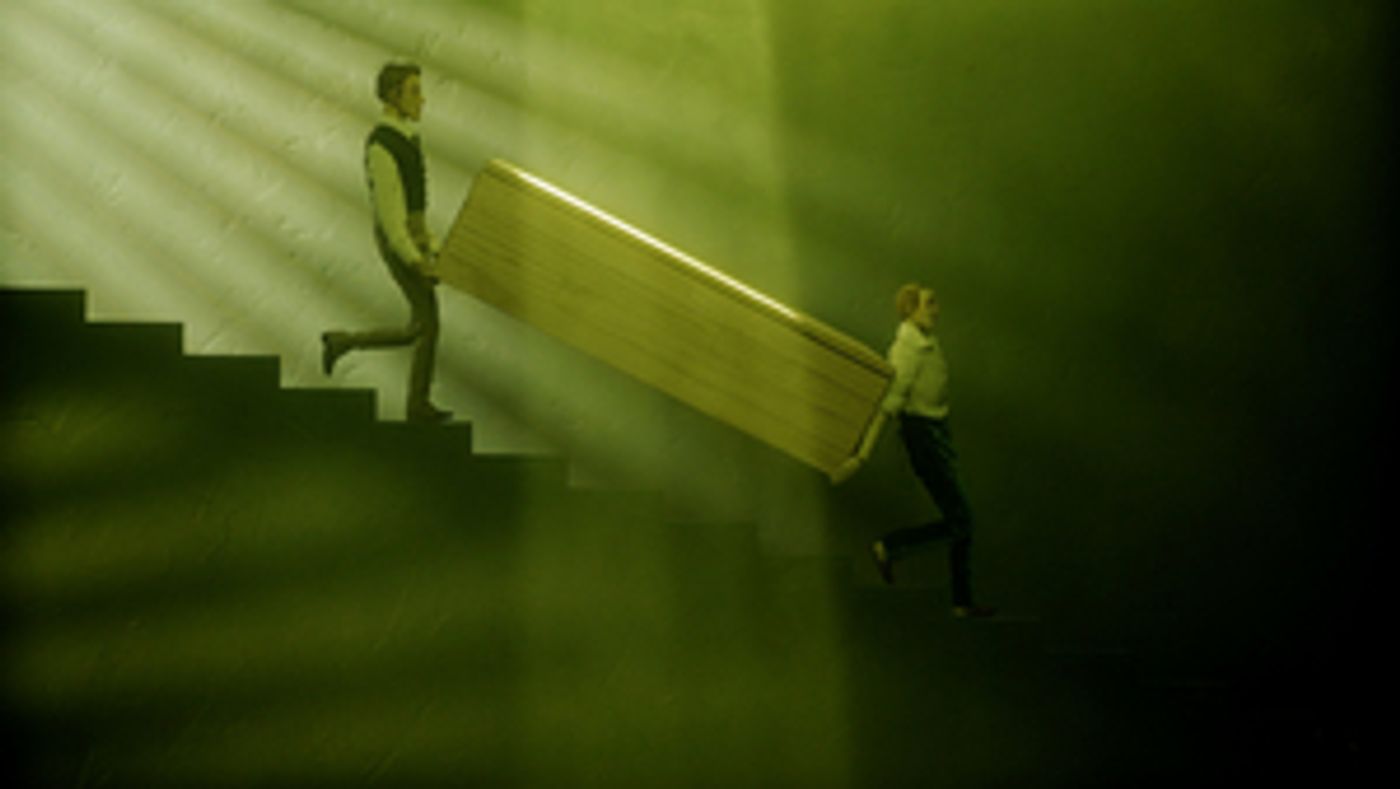Review: THE FALL OF THE HOUSE OF USHER at Boston Lyric Opera
BLO's ambitious animated undertaking for their new streaming service

Before the shutdown, the final piece I reviewed for Broadway World was Boston Ballet's rEVOLUTION which included Glass Pieces, a hypnotic embrace of the geometrics of a theatre space by Phillip Glass and Jerome Robbins. Glass' orchestral pieces
are famously elusive, sneakily looping repetitions with irregular variations in a way that lulls a listener into a meditative state. In Glass Pieces, Jerome Robbins created a visually distinctive world which reflects the idiosyncrasies of Glass' score, taken from his controversial opera, Akhnaten. In perhaps his most famous opera, Einstein on the Beach, Robert Wilson pairs Glass' music with hauntingly resonant images which epitomize Wilson's superior understanding of theatre as a visual form. In Boston Lyric Opera's new film adaptation of Glass' The Fall of the House of Usher, director James Darrah fumbles into the nebulous redundancies of the music and delivers an effete 90 minute screensaver in lieu of an unnerving rendition of the Edgar Allan Poe tale. In moments when Franco Zefirelli would have paraded a line of children across the stage or cued the entrance of dancers with ribbons, Darrah vamps with animated loops of rain or twinkling stars which land as neutered filler material.
In the traditional teachings of the Japanese tea masters, a painting of flowers was never meant to be displayed near an actual floral arrangement. Darrah trips into this redundancy as references to silent movie title cards, vintage televisions, Esther Williams films, the Twilight Zone and more seem to belittle our collective obsession with screen time as this opera is broadcast to us through BLO's new streaming service. We are hectored by violent snippets of archival footage showing us animal testing, police brutality, psych ward restraints, and explosions, but the clips relate to each other only superficially and never pack a punch greater than the sum of their parts. Images of Jackie O with JFK and Marilyn Monroe seem the most exhausted dig at American media consumption conceivable, yet the trope is leaned upon heavily amidst these sequences.
Screenwriter Raúl Santos has positioned Poe's gothic narrative about twins with unspecified (and presumably interrelated) mental, familial, and architectural deteriorations in the mind of a non-verbal girl in a contemporary US border concentration camp. Though the juxtaposition stretches to comment on the crumbling of our empire's collective family tree, Santos' bird motifs and melodramatic action sequences seem to be the most depreciated way to fill the otherwise abstract and complex libretto. Clearly a grab at the Holy Grail of all adjectives, "timely", one might struggle to find a tale less conducive to the psyche of a little girl in peril, and one would certainly be hard-pressed to find a less appropriate author to illustrate the machinations of her mind than Poe. While I applaud the team's attempt to bring this 19th century story and late 20th century opera into conversation with modern politics, the effort falls short and the result feels opportunistic at best and exploitative at worst.
The two distinctive animation styles illustrate the versatility of production designer Yuki
Izumihara, and both seem apt at capturing the complexities of their respective narratives. The traditional arch about the Usher twins and their guest (unnamed in the story, here called William) is enacted by a small cohort of sculpted figurines. There are moments of cinematic tension as William races through a stormy night on his horse or the two men carry a coffin down a flight of stairs. However, a plethora of seemingly experimental shots in which the figurines remain static remind us of the lifelessness of the characters. What may be an attempt at a Brechtian reminder we are watching a film (Darrah recently created an excellent Threepenny Opera for BLO) ends up making an otherwise tense, gothic storyline seem comical. Constant reminders that we are watching lifeless Barbie dolls within a miniature architecture diminish the impact of sweeping shots of the eponymous house and make the appearance of a ghost seem like a villain in a Saturday morning cartoon. The Quay Brothers have created beautifully haunting animations with doll characters and Stéphane Aubier's 2009 Panique Au Village sustains a full narrative through figurines with limited mobility. I believe this story could be effectively retold with these figurines, but I do not believe BLO has done it.
Meanwhile, the narrative of Luna, the young immigrant who ostensibly imagines a gothic horror story about two adult siblings, is beautifully rendered in gouache, watercolor, and ink. The textures are stunning, the images are much more carefully selected, and a few stand-out sequences of hand drawn animation (a cannibalistic nightmare and a swarm of dark birds in particular) kept me invested in a sumptuously layered world. At times, the organically scrawled drawings seemed at odds with the sterile After-Effects-esque motions, but moments of splattering rain, blood, and vomit heroically muddied the Reading Rainbow varnish. There is an overt reliance on written labels (DETENTION CENTER) which give us information we could easily muster ourselves and these, mixed with the sporadic title cards bemire what is written in the opera's limited libretto and what has been added to this adaptation. In future, if BLO wants to tell a story about the injustices faced by immigrants in America, I hope they will just do so, without trying to slip it between the cracks of a crumbling gothic manor house.
The opera can be streamed on demand here.
Reader Reviews
Videos

